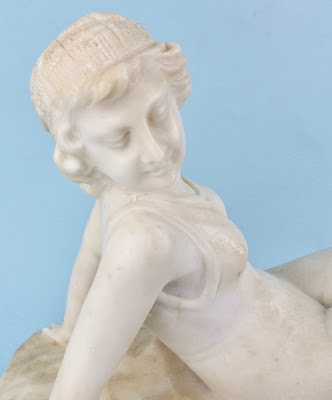Let me make you smile
Let me do a few tricks
Some old and then some new tricks
I'm very versatile
And if you're real good
I'll make you feel good
I'd want your spirits to climb
So let me entertain you
We'll have a real good time,
Yes sir!
We'll have...
A real good time!
Gypsy, 1959, Jule Styne and Stephen Sondheim
This immodest model by Carl Schneider looks like a showgirl in a burlesque show, languorously lifting away the straps of her elaborate, if exiguous, top. As Gypsy Rose Lee, the famous American burlesque entertainer and "ecdysiast" who put the tease in striptease, once said, "If a thing is worth doing, it is worth doing slowly…very slowly."
The same model of half doll as pictured in the Schneider catalogue. My lady is 3.25 inches tall and incised "15547." The example in the catalog is denoted as "15545," which could be due to a difference in size or finish. This model came in several sizes and was also offered with a golden brassiere.





